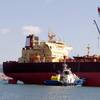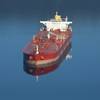Australia's ascent to liquefied natural gas (LNG) producing giant is choking off trade routes from Atlantic to Pacific markets established after Japan's Fukushima nuclear disaster, giving rise to new routes.
Mass cargo diversions from west to east earned traders fat margins as Asian markets commanded steep price premiums, partly driven by Japan's scramble to replace lost nuclear output.
Waning Asian demand, major new supply from nearby Australia and converging global LNG prices are all putting a stop to long-haul diversions.
At $0.40 per million British thermal units (mmBtu), Asia's premium over European markets is less than the cost of shipping a cargo from Britain to Japan, a trader said, slamming the brakes on cross-basin trade.
But new routes are emerging.
"The first 25 years of Australian production went to Japan, Korea and China with the occasional cargo to Taiwan and now it's going virtually everywhere in Asia and the Middle East," said independent energy consultant Andy Flower.
"Last year it went into Singapore, Malaysia, Thailand, India, Pakistan, Jordan, Egypt, Dubai and Kuwait," he said.
The varying qualities of LNG, including the more recent super lean gas exports from Australia, are also complicating trade flows.
Some buyers are more flexible and able to take a broader range of gas specifications, such as Jordan and India, which could have helped boost Australian volumes to India.
Flower said that in 2015 India took around 0.8 million tonnes of Australian LNG, having not taken any the previous year.
"More volumes from Australia are going to India, especially lean cargoes as Japan, Korea and Taiwan don't like to receive lean gas," a trader said.
Australia's new batch of LNG export plants - Shell's Queensland Curtis, Santos' Gladstone and Origin Energy's AP LNG - source their supply from coal-bed methane deposits, giving the gas a lower heating value.
The specific quality of the resulting LNG, called lean, cannot be easily absorbed by some countries in Asia, although importers are making strides in handling greater quantities of lean supply expected to come from the United States.
Only Chevron's giant Gorgon LNG export project, which has Indian customers, is fed by conventional gas fields. Gorgon shipped its first cargo on Monday bound for Japan.
Australian exports are also increasingly expected to reach the Middle East, partly because of contractual agreements linked to some of the export plants.
China's Sinopec has been given rare approval by its partners in the Australia Pacific LNG project to sell some of the cargoes it doesn't need for itself, provided they are sold outside Asia.
That gives it little choice but to target sales into the Middle East given that selling the LNG further afield, such as Europe, may prove economically difficult.
(By Oleg Vukmanovic and Sarah McFarlane; Editing by David Evans)











